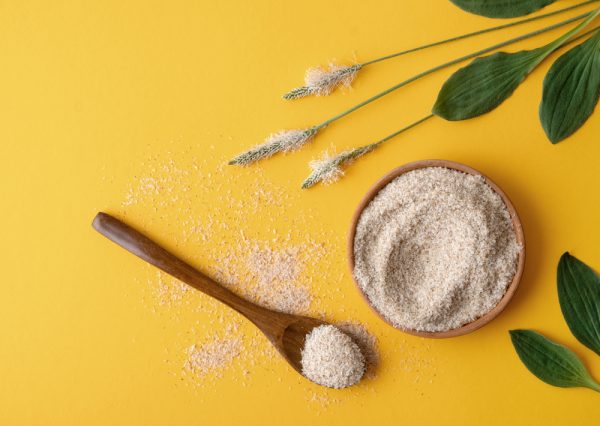Do you love starting your day with a cup of coffee, but also want to incorporate more fiber into your diet? You may be wondering if you can add psyllium husk to your coffee. The good news is that you can! Psyllium husk is a soluble fiber that can easily be added to hot beverages like coffee without altering the taste or texture.
Psyllium husk is known for its ability to promote regularity and improve digestion. It also helps to keep you feeling full, which can aid in weight loss. Adding psyllium husk to your coffee is a convenient way to incorporate more fiber into your diet without having to make significant changes to your routine. Plus, the strong aroma and flavor of coffee can effectively mask the earthy taste of psyllium.
Understanding Psyllium Husk
What is Psyllium Husk?
Psyllium husk is a type of soluble fiber that is derived from the seeds of the Plantago ovata plant. It is commonly used as a dietary supplement to promote digestive health and regularity. Psyllium husk is available in various forms, including whole husks, husk powder, and capsules.
One of the unique properties of psyllium husk is its ability to absorb water and form a gel-like substance. This helps to soften stool and promote regular bowel movements. Psyllium husk is also a prebiotic, which means it helps to feed the beneficial bacteria in your gut.
Health Benefits of Psyllium Husk
Adding psyllium husk to your coffee can provide a range of health benefits. Here are some of the key benefits:
- Digestive Health: Psyllium husk is known for its ability to promote digestive health and regularity. It can help to relieve constipation, diarrhea, and other digestive issues.
- Weight Management: Psyllium husk can help to promote feelings of fullness and reduce appetite, which can be helpful for weight management.
- Blood Sugar Control: Psyllium husk can help to regulate blood sugar levels and improve insulin sensitivity. This can be particularly beneficial for people with diabetes.
- Heart Health: Psyllium husk can help to lower cholesterol levels and reduce the risk of heart disease.
Overall, psyllium husk is a versatile and beneficial supplement that can be easily incorporated into your daily routine. Adding it to your coffee is a simple and convenient way to enjoy its many health benefits.
Coffee and Psyllium Husk
If you are a coffee lover looking to add some extra fiber to your diet, you might be wondering if you can add psyllium husk to your coffee. In this section, we’ll explore the answer to this question and the effects of adding psyllium husk to your coffee.
Can You Add Psyllium Husk to Coffee?
Yes, you can definitely add psyllium husk to your coffee. Psyllium husk is a soluble fiber that can dissolve well in liquids. You can add it to your coffee either before or after brewing. The easiest way to prepare psyllium husk coffee is by brewing the coffee first and simply adding and mixing the psyllium husk directly into it. The psyllium will easily and rapidly dissolve into the beverage.
Effects of Adding Psyllium Husk to Coffee
Adding psyllium husk to your coffee can have several benefits. Psyllium husk powder contains fiber, so it has the ability to help keep you feeling full for longer periods of time. This can be especially helpful if you are trying to lose weight or prevent weight gain.
In addition, psyllium husk can also help promote regularity, which is essential for people who suffer from constipation. Psyllium husk absorbs water and forms a gel-like substance that helps bulk up the stool and move it through the digestive tract.
However, it’s important to note that psyllium husk can also have some side effects if you consume too much of it. It’s recommended to start with a small amount and gradually increase it over time to avoid any digestive discomfort.
Overall, adding psyllium husk to your coffee can be a convenient and tasty way to increase your fiber intake. Just make sure to listen to your body and adjust the amount according to your needs.
How to Add Psyllium Husk to Coffee
If you’re looking to add some extra fiber to your morning cup of coffee, psyllium husk might just be the perfect solution. Here are a few tips on how to add psyllium husk to your coffee for a boost of nutrition.
Choosing the Right Psyllium Husk
When selecting psyllium husk to add to your coffee, it is important to choose a high-quality, organic product. Look for a psyllium husk that is finely ground and free from any additives or fillers. One popular option is Viva Naturals Organic Psyllium Husk Powder, which is non-GMO and finely ground for easy mixing.
Proper Mixing Techniques
To add psyllium husk to your coffee, start by brewing your coffee as you normally would. Once your coffee is ready, add a small amount of psyllium husk powder to your cup. It’s important to mix the psyllium husk into the coffee quickly and thoroughly to ensure that it dissolves properly. You can use a spoon or a frother to mix the psyllium husk into the coffee.
It’s also important to note that psyllium husk can thicken your coffee, so it’s best to start with a small amount and gradually increase the amount until you find the right balance. Too much psyllium husk can make your coffee too thick and difficult to drink.
In conclusion, adding psyllium husk to your coffee is a great way to boost your fiber intake and promote regularity. Just be sure to choose a high-quality product and mix it into your coffee quickly and thoroughly. With these tips, you’ll be able to enjoy a delicious and nutritious cup of coffee every morning.
Potential Side Effects
Psyllium husk is an excellent source of fiber that can be added to your coffee to boost its nutritional value. However, it is essential to be aware of potential side effects and take certain precautions to avoid any adverse reactions.
Possible Health Risks
While psyllium husk is generally safe for most people, it can cause allergic reactions in some individuals. Symptoms of an allergic reaction may include itching, swelling, difficulty breathing, and hives. If you experience any of these symptoms after consuming psyllium husk, seek medical attention immediately.
Moreover, psyllium husk can cause gastrointestinal side effects such as bloating, gas, and stomach cramps. In rare cases, it can lead to more severe side effects such as intestinal blockage, which can be life-threatening.
Precautions to Take
To avoid potential health risks, it is crucial to take certain precautions when adding psyllium husk to your coffee. Here are some tips to keep in mind:
- Start with a small amount: Begin by adding a small amount of psyllium husk to your coffee and gradually increase the quantity over time. This will allow your body to adjust to the fiber content and minimize the risk of gastrointestinal side effects.
- Drink plenty of water: Psyllium husk absorbs water and expands in your digestive tract, which can cause constipation or intestinal blockage if you do not drink enough water. Therefore, it is essential to drink plenty of water throughout the day when consuming psyllium husk.
- Consult your doctor: If you have any underlying medical conditions or are taking any medications, it is best to consult your doctor before adding psyllium husk to your coffee. They can advise you on the appropriate dosage and any potential interactions with your medications.
In conclusion, psyllium husk can be a healthy addition to your coffee, provided you take the necessary precautions and are aware of potential side effects. By following the tips mentioned above, you can enjoy the nutritional benefits of psyllium husk without any adverse reactions.
Conclusion
Adding psyllium husk to your coffee can be a great way to increase your fiber intake and promote regularity. However, it’s important to keep in mind that psyllium husk can absorb a lot of water, so it’s essential to drink plenty of fluids throughout the day to prevent dehydration.
If you’re new to psyllium husk, start with a small amount and gradually increase the dosage over time. This will help your body adjust to the added fiber and prevent any digestive discomfort.
Remember to choose high-quality psyllium husk powder that is free from additives and fillers. Look for organic and non-GMO options that have been finely ground for easy mixing.
Overall, adding psyllium husk to your coffee can be a simple and effective way to improve your digestive health. Just be sure to listen to your body and adjust your dosage as needed.
Frequently Asked Questions
Can you mix psyllium husk with protein powder?
Yes, you can mix psyllium husk with protein powder. In fact, adding psyllium husk powder to your protein shake can be a great way to increase your daily fiber intake. Just make sure to drink plenty of water throughout the day to prevent dehydration.
Best fiber to add to coffee?
Psyllium husk is a great fiber to add to coffee because it dissolves easily in hot liquids and has a mild flavor that can be easily masked by the coffee. Other fibers that can be added to coffee include chia seeds, flaxseeds, and oat bran.
How long after taking Metamucil can I drink coffee?
It is recommended to wait at least 30 minutes after taking Metamucil before drinking coffee or any other beverage. This will allow the psyllium to fully absorb water and expand in your digestive system, which can help promote regularity.
How much psyllium husk per day?
The recommended daily intake of psyllium husk is 5-10 grams per day, which is equivalent to 1-2 teaspoons of psyllium husk powder. It is important to start with a small amount and gradually increase your intake to avoid digestive discomfort.
Psyllium husk benefits?
Psyllium husk is a great source of soluble fiber, which can help regulate digestion, lower cholesterol levels, and improve blood sugar control. It can also help promote feelings of fullness and aid in weight loss.
Is it better to take psyllium husk at night or in the morning?
There is no specific time of day that is better to take psyllium husk. It can be taken at any time that is convenient for you, as long as it is taken with plenty of water. Some people find that taking psyllium husk before bed can help promote regularity in the morning.

